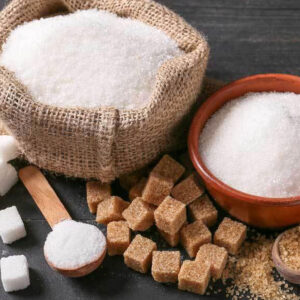The refining process of beet sugar vs cane sugar changes, affecting the final product’s appearance.
The refining process of beet sugar vs cane sugar changes, affecting the final product’s appearance.
Blog Article
Discover the Uses and Advantages of Beet Sugar Vs Cane Sugar in Your Daily Diet Regimen
Discovering the distinctive high qualities of beet and cane sugar reveals greater than simply their sweetening capabilities; it highlights their special effect on wellness and cooking arts. Beet sugar, known for its refined flavor, is frequently preferred in delicate desserts, whereas cane sugar, with its tip of molasses, includes splendor to robust recipes. Each kind holds its very own dietary account and glycemic implications, welcoming a much deeper understanding of their duties in a well balanced diet plan and sustainable intake methods.
Origin and Production Processes of Beet and Cane Sugar

The distinctive climates and dirt kinds needed for expanding sugar beetroots and sugarcane add to distinctions in their cultivation methods and geographical circulation, influencing the economics and sustainability of their production. beet sugar vs cane sugar.
Nutritional Contrast Between Beet Sugar and Cane Sugar
Regardless of originating from various plants, beet sugar and cane sugar are nutritionally really comparable, both mainly consisting of sucrose. Each offers about 4 calories per gram, translating to roughly 16 calories per tsp. Structurally, both sugars are composed of approximately 99.95% sucrose, with minimal amounts of other compounds like moisture and trace element, which do not significantly modify their dietary accounts.

Ultimately, when choosing in between beet sugar and cane sugar based upon dietary material alone, both deal similar benefits and drawbacks as they are basically forms of the very same particle-- sucrose, providing fast energy without other nutrients.
Influence On Health And Wellness: Glycemic Index and Caloric Content
Exploring additionally into the impacts of beet sugar and cane sugar on health, it is vital to consider their glycemic index and calorie material. Both sugars are classified as sucrose, which contains glucose and fructose. This make-up leads them to have a similar influence on blood sugar level levels. The glycemic index (GI) of both beet and cane sugar is around 65, categorizing them as high-GI foods, which can create quick spikes in blood sugar degrees. This is an important element for individuals handling diabetic issues or those attempting to maintain their power degrees throughout the day.
Each sort of sugar has about 4 calories per gram, making their caloric content equivalent. For those checking caloric consumption, particularly when taking care of weight or metabolic health conditions, comprehending this equivalence is crucial (beet sugar vs cane sugar). Excessive consumption of any high-calorie, high-GI food can add to wellness concerns such as weight problems, heart disease, and insulin resistance.
Environmental and Economic Factors To Consider of Sugar Manufacturing
Beyond health and wellness impacts, the production of beet and cane sugar also raises significant ecological and economic concerns. Sugar beet growing has a tendency to call for cooler climates and has a reduced geographical footprint compared to sugar cane, which flourishes in tropical areas. Both crops are extensive in terms of water usage and land profession, potentially leading to logging and water deficiency. Financially, the international sugar market is extremely unstable, influenced by changes in global profession plans and aids. Several nations incentivize sugar production through economic support, skewing market value and influencing small farmers negatively.
Furthermore, the use of pesticides and plant foods in both beet and cane sugar farming can cause dirt degradation and contamination, more influencing biodiversity and regional water bodies (beet sugar vs cane sugar). The option in between cultivating sugar beet or cane often depends upon regional environmental problems and economic variables, making the sustainability of see this page sugar production a complex problem
Culinary Applications and Taste Distinctions
While the ecological and economic aspects of sugar production are indeed significant, the choice between beet and cane sugar also affects cooking applications and taste profiles. Beet sugar, obtained from the sugar beet plant, is known for its weblink remarkably neutral taste.
Walking cane sugar, removed from sugarcane, frequently keeps molasses traces, which impart a distinctive splendor and depth. This slight molasses taste enhances the intricacy of baked goods, sauces, and marinates. It is specifically preferred in things where a caramel undertone is wanted, such as in brownies or gingerbread. The slight variation in wetness web content between beet and cane sugar can affect the texture and uniformity of recipes, making cane sugar a recommended choice for specific dishes that benefit from its one-of-a-kind properties.

Conclusion
In conclusion, both beet and cane sugar have unique beginnings and production processes, supplying comparable nutritional profiles with small distinctions in sodium content and flavor. While their influence on wellness, specifically pertaining to glycemic index and calories, is equivalent, the choice in his response between them frequently comes down to ecological, economic variables, and details culinary requirements. Recognizing these elements can direct consumers in making notified choices that line up with their wellness objectives and taste choices.
Report this page